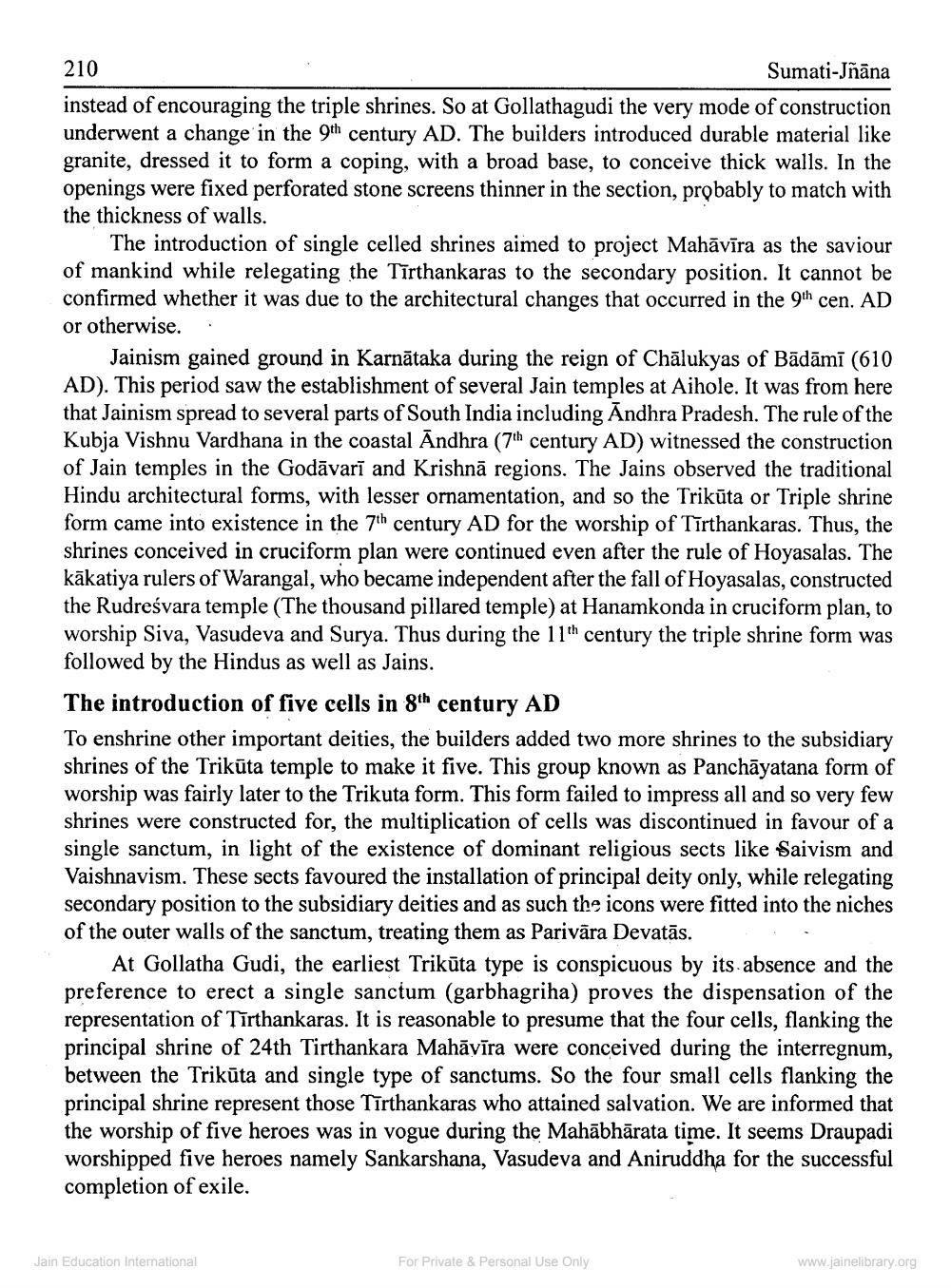________________
210
Sumati-Jnāna instead of encouraging the triple shrines. So at Gollathagudi the very mode of construction underwent a change in the 9th century AD. The builders introduced durable material like granite, dressed it to form a coping, with a broad base, to conceive thick walls. In the openings were fixed perforated stone screens thinner in the section, probably to match with the thickness of walls.
The introduction of single celled shrines aimed to project Mahāvīra as the saviour of mankind while relegating the Tīrthankaras to the secondary position. It cannot be confirmed whether it was due to the architectural changes that occurred in the 9th cen. AD or otherwise..
Jainism gained ground in Karnātaka during the reign of Chālukyas of Bādāmī (610 AD). This period saw the establishment of several Jain temples at Aihole. It was from here that Jainism spread to several parts of South India including Andhra Pradesh. The rule of the Kubja Vishnu Vardhana in the coastal Āndhra (7th century AD) witnessed the construction of Jain temples in the Godāvarī and Krishnā regions. The Jains observed the traditional Hindu architectural forms, with lesser ornamentation, and so the Trikāta or Triple shrine form came into existence in the 7th century AD for the worship of Tīrthankaras. Thus, the shrines conceived in cruciform plan were continued even after the rule of Hoyasalas. The kākatiya rulers of Warangal, who became independent after the fall of Hoyasalas, constructed the Rudreśvara temple (The thousand pillared temple) at Hanamkonda in cruciform plan, to worship Siva, Vasudeva and Surya. Thus during the 11th century the triple shrine form was followed by the Hindus as well as Jains. The introduction of five cells in 8th century AD To enshrine other important deities, the builders added two more shrines to the subsidiary shrines of the Trikūta temple to make it five. This group known as Panchāyatana form of worship was fairly later to the Trikuta form. This form failed to impress all and so very few shrines were constructed for, the multiplication of cells was discontinued in favour of a single sanctum, in light of the existence of dominant religious sects like Saivism and Vaishnavism. These sects favoured the installation of principal deity only, while relegating secondary position to the subsidiary deities and as such the icons were fitted into the niches of the outer walls of the sanctum, treating them as Parivāra Devatās. . .
At Gollatha Gudi, the earliest Trikūta type is conspicuous by its absence and the preference to erect a single sanctum (garbhagriha) proves the dispensation of the representation of Tīrthankaras. It is reasonable to presume that the four cells, flanking the principal shrine of 24th Tirthankara Mahāvīra were conceived during the interregnum, between the Trikūta and single type of sanctums. So the four small cells flanking the principal shrine represent those Tīrthankaras who attained salvation. We are informed that the worship of five heroes was in vogue during the Mahābhārata time. It seems Draupadi worshipped five heroes namely Sankarshana, Vasudeva and Aniruddha for the successful completion of exile.
Jain Education International
For Private & Personal Use Only
www.jainelibrary.org




